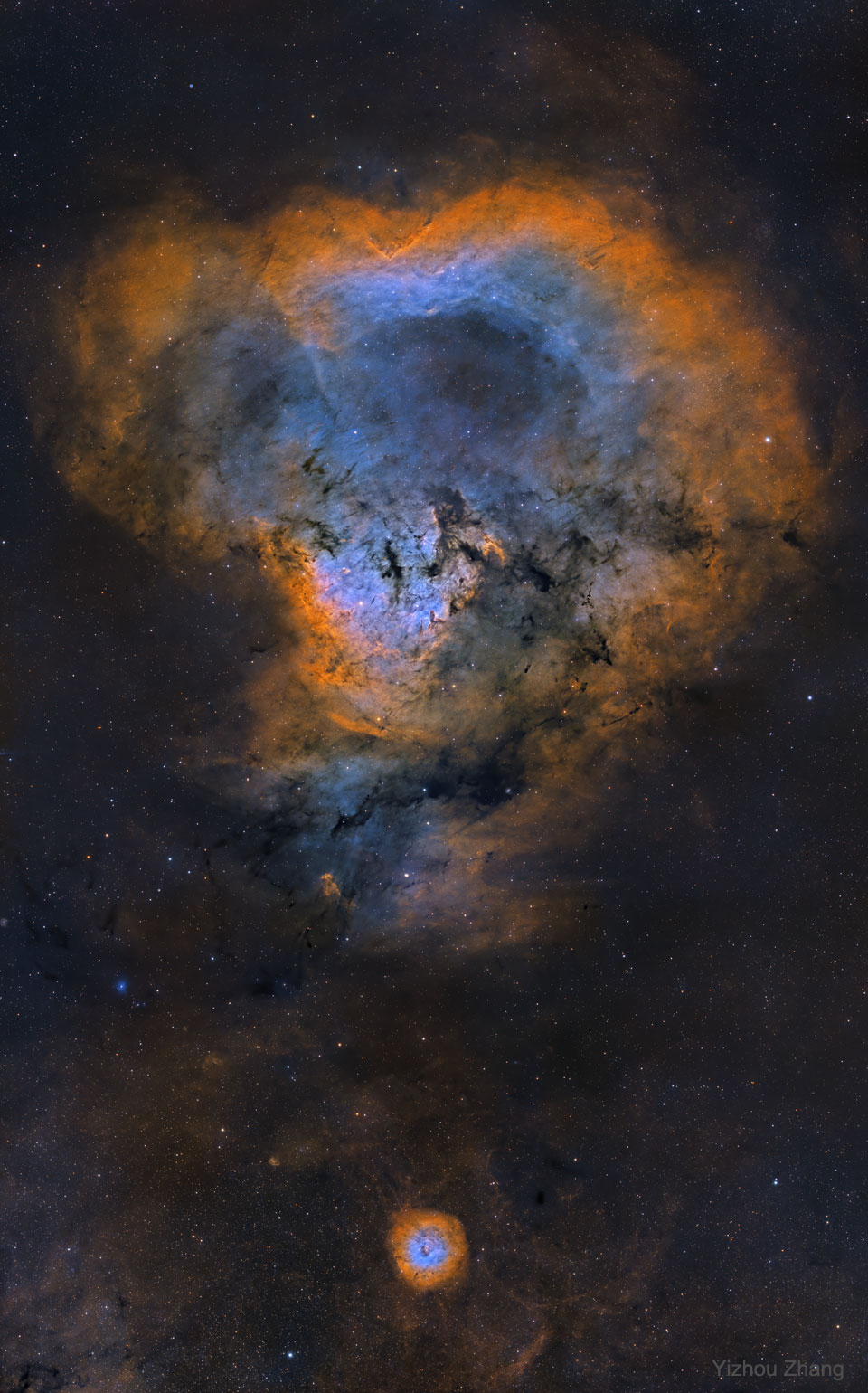2021年10月13日
NGC 7822: Cosmic Question Mark
Image Credit & Copyright: Yizhou Zhang
Explanation: It may look like a huge cosmic question mark, but the big question really is how does the bright gas and dark dust tell this nebula’s history of star formation. At the edge of a giant molecular cloud toward the northern constellation Cepheus, the glowing star forming region NGC 7822 lies about 3,000 light-years away. Within the nebula, bright edges and dark shapes stand out in this colorful and detailed skyscape. The 9-panel mosaic, taken over 28 nights with a small telescope in Texas, includes data from narrowband filters, mapping emission from atomic oxygen, hydrogen, and sulfur into blue, green, and red hues. The emission line and color combination has become well-known as the Hubble palette. The atomic emission is powered by energetic radiation from the central hot stars. Their powerful winds and radiation sculpt and erode the denser pillar shapes and clear out a characteristic cavity light-years across the center of the natal cloud. Stars could still be forming inside the pillars by gravitational collapse but as the pillars are eroded away, any forming stars will ultimately be cut off from their reservoir of star stuff. This field of view spans over 40 light-years across at the estimated distance of NGC 7822.
Tomorrow’s picture: open space
NGC 7822:宇宙级的问号
影像提供与版权: Yizhou Zhang
说明: 它或许形似庞大的问号,然而真正的大疑问是:它明亮的气体和黝黑尘埃,在述说的星云恒星形成史是什么?明亮不断散发辉光的恒星形成区NGC 7822,位在北天仙王座的一团庞大分子云之边缘,离我们约有3,000光年远。在这幅彩色细致的星空影像里,此星云最醒目的是明亮的云气脊和黝黑的暗星云。这幅由位在美国德州的一部小望远镜摄于28个夜晚的9张照片所组成的影像,整合了来自原子氧(蓝)、氢(绿)和硫(红)的窄波段辐射数据。这些辐射线及其颜色映射组合,则引自名闻遐迩的哈伯配色表。这些原子辐射是受到炽热中心恒星的高能辐射之驱动,此外,恒星的强烈恒星风和星光,也雕塑和侵蚀较致密的尘埃柱,并在诞生它们的云气里,清出了一个宽达数光年的特征性空穴。在云柱之内,仍持续经由重力塌缩在形成恒星之中,不过随着云柱侵蚀殆尽,任何还在形成中的恒星,都会失去原来的造星物质库。以NGC 7822的距离来换算,这张影像的跨幅约为40光年。
明日的图片: open space



